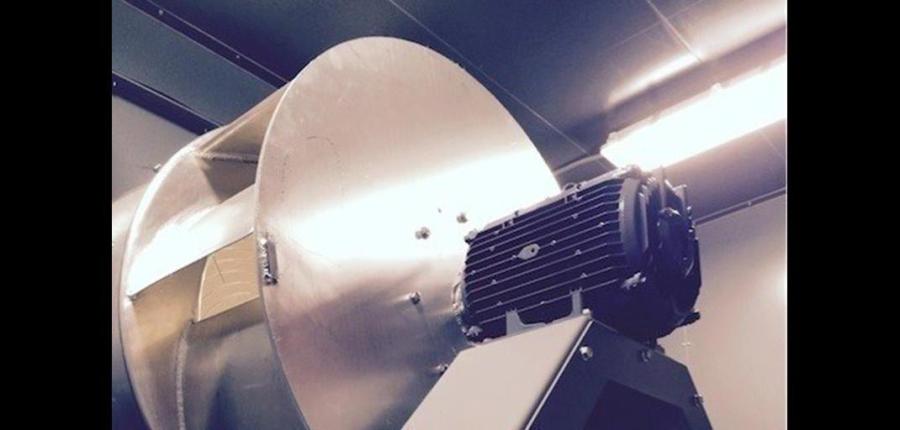No More PSC Motors!
by Arther Miller, CMS
As I was walking around and looking at all the AHR Show had to offer back in January, I could not help but think that most of what I saw had to do with energy efficiency and potentially saving energy for the consumer. I could not get away from the constant drumbeat of the focus on motors. There was nothing there that I recognized from the ‘ole’ days, and even though I wondered why, I also knew the answer to my question. And that answer is the Department of Energy (DOE) and their motor standards.
In May 2014, the DOE amended the energy conservation standards for certain commercial and industrial electric motors, as noted below:
1. The new rules greatly expanded the scope of motors and their efficiency levels
2. The new rules took effect sooner than previous changes.
3. The current regulations prior to 2014 affected approximately 30% of all motors, where the new rules covered over 90% of all electric motors.
4. Motor manufacturers had to redesign motors so that they operated at premium efficiency levels.
5. Motor manufacturers were required to stop selling and manufacturing any motor that was not compliant by June 1st, 2016.
6. Motors covered by the rule included open and enclosed design, 600 volts and below, 1—500 Hp; 2, 4, 6 and 8 poles 7.
The regulations were projected to save the equivalent of 1% of total U.S. electricity consumption, based on 2013 usage levels. By now you are asking yourself what does that have to do with me and why is this important. It is because of the next phase of the DOE standards, which are coming into effect July 3, 2019. That’s this year, so let’s check to see what this means.
The DOE has mandated higher FERs, that’s higher Fan Energy Rating. Which means that since the fan is connected to a motor, the motor becomes an integral part in this equation. The higher FER
ratings are applied to the residential furnace market. The 2016 regulations targeted
the commercial and industrial market. Now the residential market. Depending upon the application of the residential furnace: non-condensing, condensing, electric, oil and mobile home, the FER
will increase from a low of 12% to as much as 46% over the baseline. Those are all healthy increases.
And there are some exemptions as well. Even though the target is the fans, the only lever the furnace manufacturers have is to pull in the motor.
The HVAC manufacturers are required to comply starting July 3, 2019. Even though there may be
some furnaces still shipped with standard PSC induction motors which operate at about 60—65 percent efficiency, you can see there is and will be an industry-wide shift to ECMs.
The current ECM motors feature two modes of operation: constant airflow within the system or constant torque of the motor. There are significant differences in the operation of the motor and I
reviewed those differences at my presentation on ECM motors at the January meeting this year.
The constant airflow systems tend to be more high end, so what the regulation likely means for most furnaces is a shift from induction motors to constant torque ECMs. Of course, there is a
higher upfront cost of the ECM and the jury will remain out for some time as to the overall energy savings.
The effects of the change on the HVAC industry can and will be a mixed bag. On the downside, new equipment sales could hurt because the customer will be faced with repair vs. replace. Higher
prices on new equipment may lead homeowners to decide to repair their old unit with an induction motor and live with it a little longer rather than pay for a more expensive system with an
ECM. The days of the PSC are numbered so the customer will not have a choice ion price if they need a new furnace.
I believe the technician will benefit in the transition to the ECM. I saw a new motor from Gentec at the AHR Show that is an ECM. But the motor is brain dead and needs to be programmed...but it will not be programmed by the wholesaler by model and serial number. It will be programmed by the technician because the motors current internal controller will be external and will be added onto the installation of the new motor and will be programmed through this external controller for the configuration for that installation. So the motor will be set up for that application. I reviewed this motor at my presentation in February and it was so new that Gentec would not let me take a picture of it nor would they say when it was due in the market place, other than ‘soon.’
From the consumer’s standpoint, the DOE estimates the typical furnace fan uses almost 10% of the total electricity of an average home in the US. Multiply that times the number of homes and there
is the potential for significant energy savings from the power producing utilities.
In closing, you really need to check out the new motor from Gentec, which actually has been available to manufacturers for some 3 years now but has not shown up in the marketplace yet. When you first see this fan assembly, you will not see a motor and will not understand how it can operate. It is known as the ‘Dec Star’ and here is a URL to see a video on it.



